Welcome to the world of Colada Coffee—a sugary wake-up call from Cuba that is taking the global coffee scene by storm. But what is Colada Coffee, exactly? It’s a robust, sweet, and intensely flavorful variation of Cuban espresso, packed into small shots that invigorate your senses and enliven your spirit.
Steeped in tradition and culture, this coffee isn’t just a beverage—it’s a social experience, a shared ritual, and a testament to the vibrant Cuban coffee culture. It’s the perfect blend of strong espresso and sugar, creating a delightful balance that’s both refreshing and energizing.
In this article, we’ll dive deep into the heart of this Cuban espresso phenomenon, exploring its roots, its preparation, and the unique traditions surrounding it. Whether you’re an avid coffee enthusiast or a curious newcomer, get ready for an immersive experience that will transport you from the lively streets of Miami to the very essence of Cuba, all through the indulgent and sweet flavors of this delightful beverage.
So, ready your coffee cups and prepare your taste buds, as we unravel the story of Colada Coffee—one delicious sip at a time.
Colada Coffee: Key Takeaway
- A Taste of Cuba: In Cuban coffee culture, this traditional espresso drink stands out with its strong, rich flavor and delightful sugary sweetness.
- A Brew Like No Other: The process of making this drink involves simple ingredients but requires careful attention to detail to achieve the characteristic thick, sweet crema on top.
- More Than Just a Drink: This beverage is deeply rooted in Cuban culture and represents a shared experience, often served in small batches to be enjoyed among friends and family.
- A World of Flavor: The unique taste profile of colada, with its strong espresso and sugar combination, makes it stand out among other coffee varieties.
- From Cuba to the World: The popularity of this coffee drink has expanded beyond Cuba and Miami, finding its place in the global coffee culture and influencing modern coffee trends.
The Origins and Popularity of Colada Coffee
In the world of coffee, each culture has its own unique take on this caffeinated elixir. Among these, the Cuban population stands out with its notorious brew—Colada Coffee.
Colada Coffee: What Is It?

So, what is Colada Coffee? This beverage is a distinctive Cuban espresso served in small, sugary shots that are renowned for their ability to awaken the senses in an instant. (1) Made with a mixture of strong espresso and sugar, this drink is not just about the caffeine kick. It’s about flavor and tradition, a testament to the richness of Cuban culture and the country’s love for coffee. Each shot of this beverage packs a punch with its robust, sweet, and intensely flavorful profile, making it a favorite among coffee enthusiasts and casual drinkers alike.
The Cultural Significance of Colada Coffee in Miami
This delectable beverage is deeply rooted in the Cuban and Cuban-American population of South Florida, especially Miami. Here, this Cuban espresso isn’t just a beverage—it’s a symbol of community and social interaction. Sharing a batch of this drink, served in thimble-sized plastic shot glasses, is a cherished tradition. Not only is the drink shared due to its strong flavor, but it also serves as a moment for friends and family to catch up, share a laugh, and enjoy each other’s company. It’s a shared experience that has become an integral part of the social fabric in Miami.
The Spread of Colada Coffee Beyond Cuba and Miami

While this coffee’s roots are undeniably Cuban, its popularity, as mentioned before, has spilled over the borders of Cuba and Miami. Today, this Cuban espresso can be found in coffee shops and homes across the United States and beyond. This spread can be attributed to the migration of Cubans to other parts of the world, taking their beloved coffee tradition with them. Additionally, the growing interest in global coffee trends and flavors has led to an increased demand for diverse coffee experiences, with this beverage being one of them.
The allure of this coffee drink lies in its rich taste, unique preparation method, and the social experience it fosters. As more people discover this Cuban espresso, it continues to leave a lasting impression, one small, sugary shot at a time.
The Art of Making Colada Coffee
Creating the perfect cup of joe is an art. It’s more than just brewing coffee—it’s a process that requires precision, patience and a touch of love. But don’t worry, even if you’re not in Cuba or Miami, you can still enjoy this Cuban espresso delight at home. Here’s what you need to know.
Tools Needed for Making Colada Coffee
The first step to making this beverage is ensuring you have the right tools. The essential equipment includes:
- A Moka Pot stove-top espresso maker: This is crucial for brewing a delicious pot of espresso, the base of your coffee.
- A large measuring glass: This is used for mixing the hot espresso and sugar. (to create the espuma)
- A small whisk: This is used to create the thick, sweet crema that tops off this drink.
The Step-by-Step Process of Making Colada Coffee in a Moka Pot

Now that you have your tools ready, let’s move on to the brewing process. Here’s a simple step-by-step guide on how to make this coffee drink:
- Start by brewing a pot of espresso using your Stove-top espresso maker (Moka Pot).
- Once the espresso is ready, add sugar along with one tablespoon of the hot espresso to a large measuring glass.
- Using a small whisk, vigorously whisk the sugar with the espresso until it becomes pale, thick, and almost completely dissolved. This will form the espuma and should take about a minute.
- Stir the remaining hot espresso into the mixture. Let the foam created by the whisking rise to the top.
- Serve immediately by pouring the mixture into espresso cups, ensuring that each cup gets a share of the sweet crema on top.
Using an Espresso Machine to Master the Colada Coffee Creation

Embracing the richness of this beverage doesn’t necessitate the use of a traditional Moka pot. Your trusty espresso machine can step up to the challenge, delivering a robust, sugary shot of Cuban delight. Here is a step-by-step guide to discovering the art of making an authentic Colada coffee using your espresso machine:
- Create the Coffee Foundation: Start by filling the chamber with finely ground coffee. Don’t hold back – in the world of this beverage, the bolder, the better! The generous amount of sugar will help counterbalance the strong flavor of the coffee, so pack in those grounds.
- Craft the Sugar Symphony: In an additional container, add two tablespoons of the brown sugar, piling them up for an added touch of sweetness. Brown sugar offers a hint of caramel flavor that harmonizes beautifully with the strong espresso. If brown sugar is not within reach, white sugar can also play the part.
- Let the Espresso Sing: Fill the water reservoir of your machine, turn on the machine and position the sugar container beneath the spout. As the machine comes to life, collect the first couple of drops of espresso in the container that is filled with sugar, then promptly replace it with your cup.
- Whisk up the Sweet Crema: Using a teaspoon or a small whisk, stir the mixture of sugar and espresso together with passion until it transforms into a beige, foamy wonder – your very own “espuma crema”.
- Blend the Magic: Once your espresso is ready, Now, it’s time to combine it with the foamed sugar. Pour the espresso into the container, gently stir to completely dissolve the sugar, and watch as light foam grace the surface.
- Share the Delight: Your drink is now ready to serve! Pour the coffee into six demitasse cups, invite your friends, and relish in the shared experience of this sweet, Cuban espresso.
Tips for Making the Perfect Colada Coffee
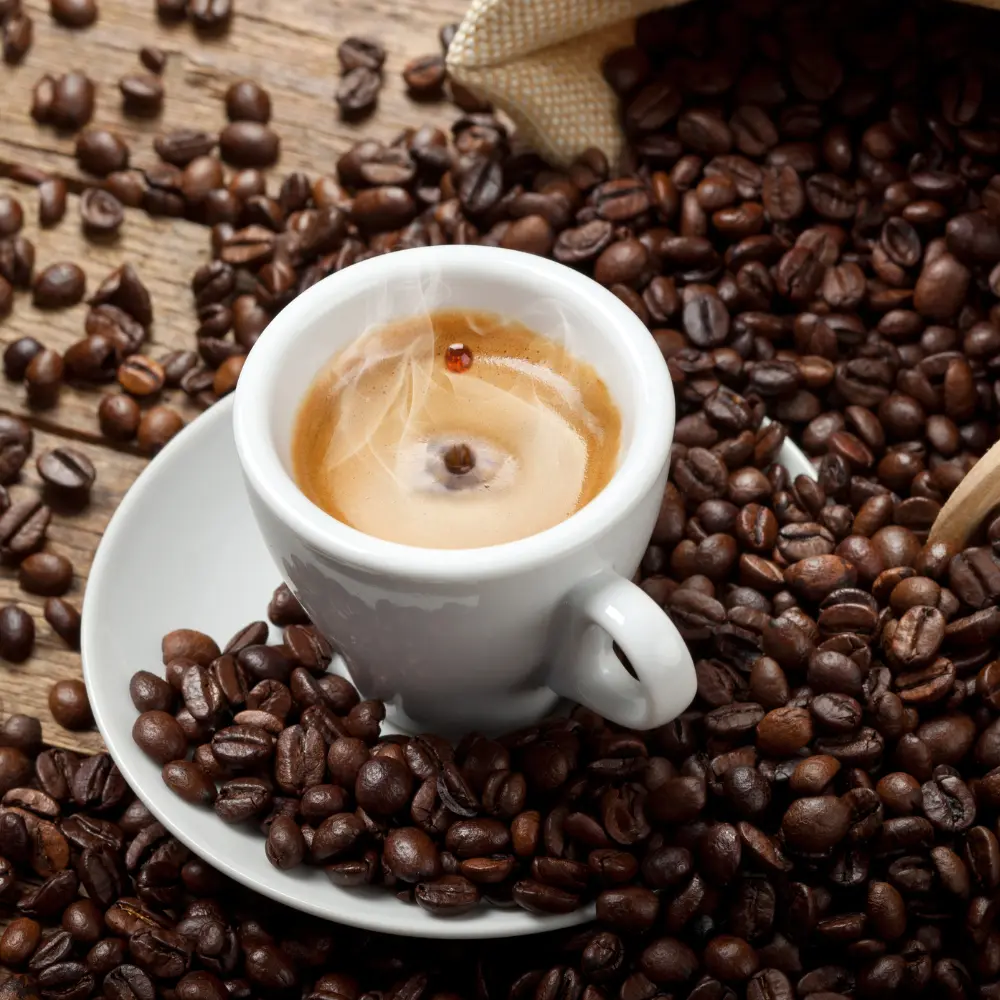
Making this coffee drink is fairly straightforward, but a few tips can help you elevate your coffee to the next level:
- Use high-quality coffee beans: The quality of your coffee beans will greatly influence the taste of your drink. Opt for fresh, high-quality beans for a robust and flavorful brew.
- Don’t rush the whisking process: The espuma ‘crema’ is what sets this coffee apart from regular espresso. Take your time when whisking the sugar and espresso to create a thick, sweet crema.
- Serve immediately: this beverage is best enjoyed fresh. Serve it immediately after brewing to fully savor its rich, sweet flavor.
With these tips in mind, you’re all set to master the art of making Colada. Enjoy this Cuban espresso delight, and don’t forget to share—it’s all part of the experience!
Savoring Colada Coffee: A Social Experience
Drinking this beverage isn’t just about getting your caffeine fix—it’s a social ritual that brings people together. As mentioned before, this Cuban espresso is often enjoyed in the company of others, creating a shared experience that is as much about friendship and community as it is about the coffee itself.
The Collective Experience of Savoring Colada Coffee
Traditionally, this coffee beverage is brewed in a small batch and served in thimble-sized plastic shot glasses. This isn’t just due to the strength of the coffee—it’s also a way of fostering a shared experience. As discussed earlier, whether it’s a family gathering, a catch-up session with pals, or a break during work, sharing a colada is a cherished ritual. It’s a moment to pause, connect, and enjoy the simple pleasure of a good cup of coffee together.
Why Colada Coffee is More Than Just a Caffeine Kick
While Colada is undeniably potent—delivering a swift caffeine kick that can wake you up in seconds—it’s more than a strong brew. This Cuban espresso is a blend of bold flavors and sweet notes, creating a rich and complex taste profile that sets it apart from regular coffee. But more importantly, it’s a drink that invites conversation and camaraderie. Every sip is an opportunity to engage, share, and create memories over a shared pot of coffee.
The Flavor Profile of Colada Coffee
When it comes to Colada, there’s more than meets the eye. This Cuban espresso boasts a rich, complex flavor profile that sets it apart from other types of coffee. It’s not just about the caffeine—it’s about the experience of savoring a well-crafted, flavorful coffee that reflects the vibrant culture it originates from.
Understanding the Rich and Strong Flavor of Colada Coffee

The espresso is at the heart of this coffee’s flavor—a strong, full-bodied brew that provides the backbone for this Cuban delight. The espresso used in this beverage is typically robust, delivering a bold taste that serves as the perfect base for the addition of sugar. As discussed earlier, the result is a blend of strong coffee and sweetness, creating a flavor that’s as invigorating as it is delightful. This Cuban espresso is sure to awaken your senses, providing a taste experience that is both intense and indulgent.
The Role of Sugar in Colada Coffee

The addition of sugar is a crucial step in making this drink. But it’s not just about adding sweetness—it’s about enhancing the overall flavor of the coffee. The sugar in Colada does more than offset the bitterness of the espresso. It adds depth to the flavor, creating a balanced taste that is both strong and sweet. The sugar also plays a key role in creating the crema—a sweet, thick layer of foam that tops off this drink and adds an extra touch of decadence to each sip.
Why the Crema is Crucial in Colada Coffee

The crema is more than just a frothy topping—it’s an integral part of the Colada Coffee experience. As mentioned before, this thick layer of sweet foam is created by whisking sugar with a bit of hot espresso until it turns pale and thick. When the rest of the espresso is slowly poured over this mixture, it results in a sweet crema that gently floats on top. Not only does the crema add a pleasing aesthetic touch to the coffee, but it also contributes to its unique flavor profile. The sweetness of the crema perfectly complements the strong espresso, creating a harmonious blend that defines the taste of this Cuban espresso.
To sum up, the flavor of this beverage is a reflection of its Cuban roots—bold, vibrant, and full of character. From the robust espresso to the sweet crema, each element contributes to the overall taste, creating a coffee experience that is truly one of a kind. So, the next time you enjoy a cup of joe, take a moment to appreciate its rich, complex flavor—it’s a testament to the art of coffee making.
Colada Coffee in Today’s Coffee Culture
Coffee has been an essential part of human life for centuries, with its rich flavors, delightful aroma, and energizing effects. In recent years, Colada, a variation of Cuban coffee, has earned its place in the limelight.
Colada Coffee vs. Other Espresso Drinks
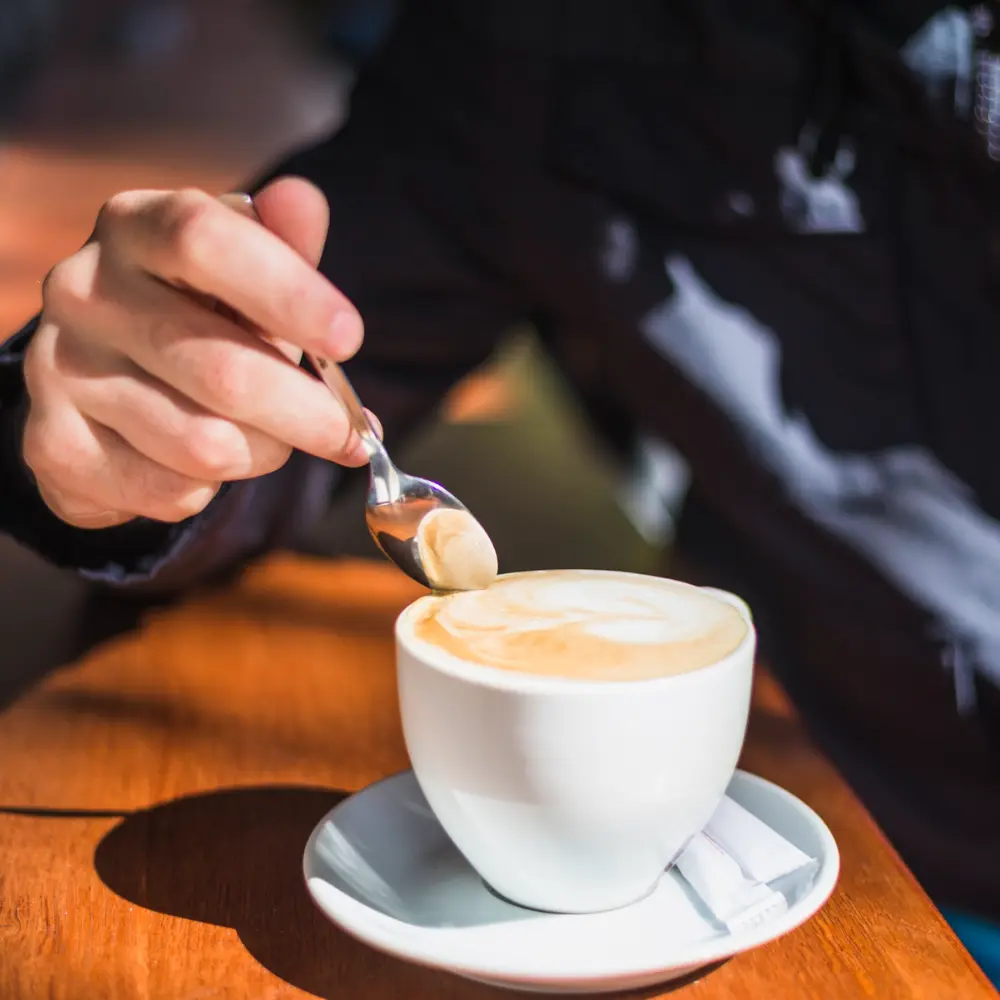
Compared to other espresso drinks, this coffee drink stands out due to its high sugar content and communal drinking culture. Unlike most espresso drinks that are typically served individually, this beverage is traditionally shared, becoming a social event that allows people to catch up with each other. The strong espresso and sugar mix gives the colada a potent kick that can wake you up in seconds, which is why it is served in small quantities. However, despite these differences, this drink shares the common ingredient of espresso with other espresso-based drinks. Below are some other popular espresso-based drinks:
- Traditional Espresso: The standard espresso shot serves as the foundation for most coffee drinks. It’s a concentrated form of coffee served in small, strong shots.
- Cappuccino: This Italian coffee drink includes equal parts of espresso, steamed milk, and froth on top.
- Latte: A latte is an espresso-based drink with steamed milk and a small amount of foam on top. It is generally creamier and less strong compared to other espresso drinks.
Comparing Colada Coffee with its Cuban Siblings

From the bustling cafecitos of Miami to the vibrant streets of Havana, Cuban coffee, in all its forms, is a beloved treasure. Our journey takes us through the rich tapestry of Cuban coffee varieties, focusing on the effervescent Colada, and its flavorful siblings. As we explore Cafe con Leche and Cortadito, we’ll appreciate the nuances that set Colada apart, while celebrating the shared heritage that binds them together.
Cafe con Leche: A Milky Version of Cuban Coffee
Another popular Cuban coffee variant is Cafe con Leche, which involves mixing espresso with hot, steamed milk, resulting in a creamier, smoother, and lighter drink compared to the robust and sweet colada. While the colada’s distinct character comes from the sugar-laden crema on top, this variant is known for its balanced blend of strong coffee and comforting milk. (2)
Cortadito: The Creamy Kin of Colada
Cortadito is essentially a Cafe Cubano “cut” with milk, earning it a reputation as a creamy counterpart to colada. Both colada and cortadito offer the strong, sweet kick characteristic of Cuban espresso, but the addition of a dash of milk to cortadito gives it a creamier texture. In contrast, the colada’s signature lies in its sugar foam that adds a sweet layer of complexity to the strong espresso beneath. (3)
The Impact of Colada Coffee on Modern Coffee Trends

Cuban coffee, specifically Colada, has made a significant impact on modern coffee culture and trends.
- Coffee and Community: The practice of sharing a colada among friends and family aligns with the rising trend of coffee being a communal experience rather than a solo one.
- The Sweet Espresso Revolution: This beverage has helped to popularize sweet espresso drinks. By incorporating sugar directly into the brewing process, this coffee drink is distinctively sweet and robust, creating a perfect balance.
- Ready-to-Drink Beverages: The growing popularity of Cuban espresso has fueled the trend of ready-to-drink coffees and canned espresso drinks.
Where to Find the Best Colada Coffee Today
While Cuban coffee shops are the best places to find authentic Colada coffee, these beverages have begun to spread across cafes worldwide, thanks to the rising appreciation for Cuban espresso.
- Miami, Florida: As mentioned before, Miami is renowned for its Cuban coffee scene, with numerous cafes serving excellent coffee. Cafes like Versailles and La Carreta are particularly famous for their authentic Cuban coffee.
- Online Stores: Many online coffee retailers and subscription services now offer Cuban espresso beans. This allows coffee lovers to make their own coffee at home.
- Global Cafes: A growing number of cafes around the world have started to introduce this beverage into their menu, contributing to the global spread of Cuban coffee culture.
As a significant part of the coffee scene, this beverage is poised to grow in popularity as more coffee drinkers worldwide develop a taste for its unique and inviting flavors. Whether you’re a coffee connoisseur or a casual drinker, the enticing blend of Cuban espresso is a must-try in the world of coffee.
Top-Rated Coffee Beans Ideal for Colada Coffee
When it comes to crafting a delectable cup of joe, the choice of coffee beans plays an integral part. The beans not only influence the taste but also contribute to the overall aroma and body of your beverage. We’ve curated a selection of some of the finest coffee beans that will provide you with an authentic coffee experience.
Naviera Cuban Style Dark Roasted Coffee

Naviera’s Cuban Dark Roasted Coffee is a fantastic option for preparing this beverage. These beans, roasted to perfection, provide a strong, robust, and indulgent taste. It offers a bold chicory flavor profile, characterized by earthy and subtly woody notes that complement the sweetness of the added sugar in this drink. Nevertheless, if you’re sensitive to caffeine or not particularly fond of chicory’s taste, it might be worth exploring alternative choices.
Bustelo Supreme Bean Espresso
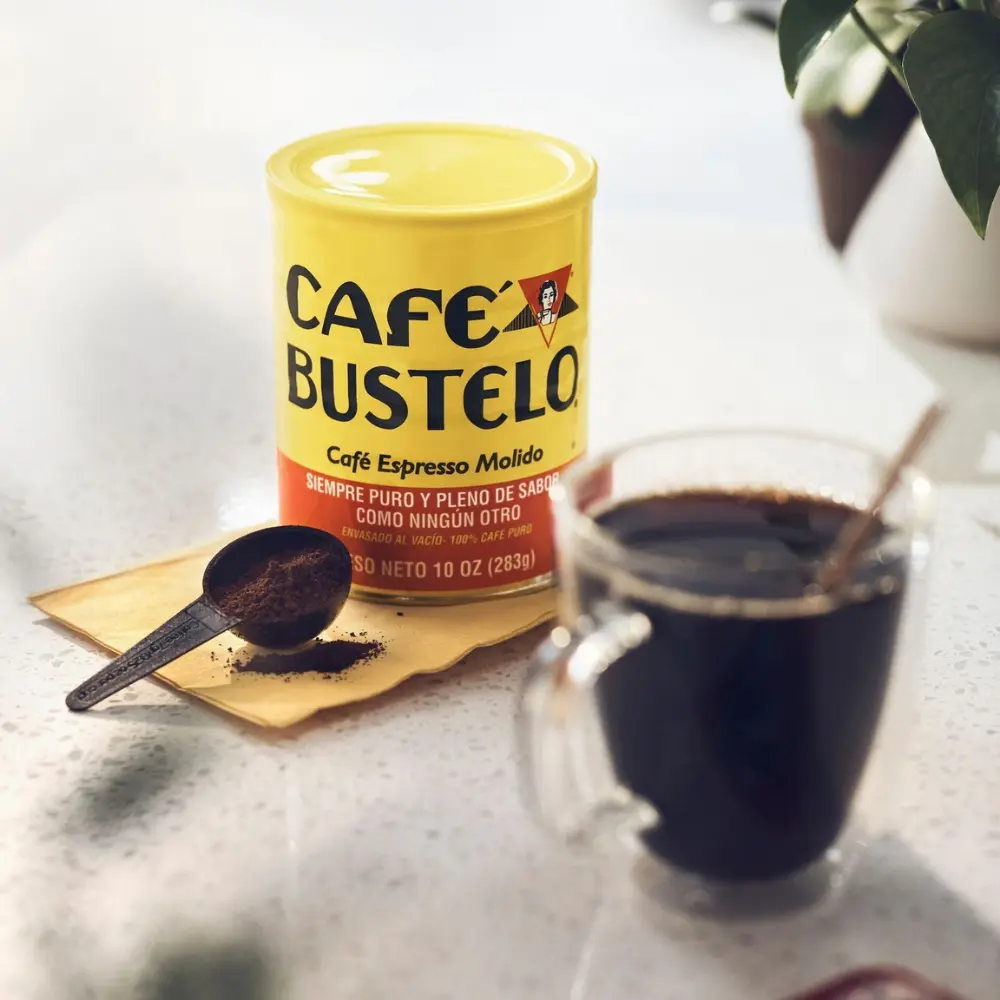
Bustelo Supreme Whole Bean Espresso is a well-known brand in Cuba, celebrated for their meticulous small-batch roasting process, guaranteeing exceptional flavor and quality in every bean. These beans are dark-roasted, providing a strong taste profile. The presence of added sugar in this coffee might accentuate a lingering bitter aftertaste.
Cafe Pilon Espresso Coffee
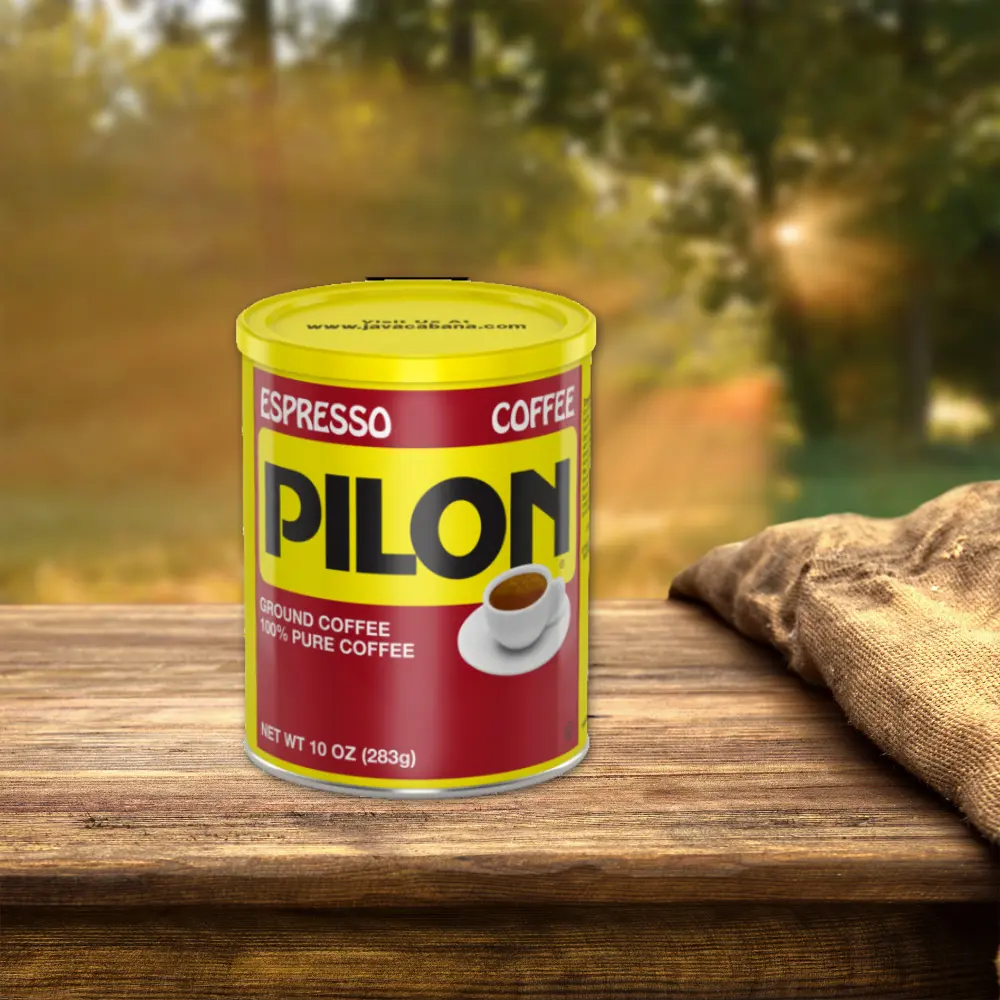
Café Pilon Espresso Coffee is known for its intense and smoky flavor, accompanied by subtle earthy notes. The dark-roasted beans deliver a powerful coffee taste, which could be overpowering if you’re not accustomed to bold espresso. However, the intense aroma and slight bitterness make it perfect for preparing Colada. This coffee variety also forms a light, creamy foam after preparation, providing a rich and creamy consistency when combined with the coffee’s foamy sugar and espresso mixture.
Chock Full O’Nuts Cuban Roast
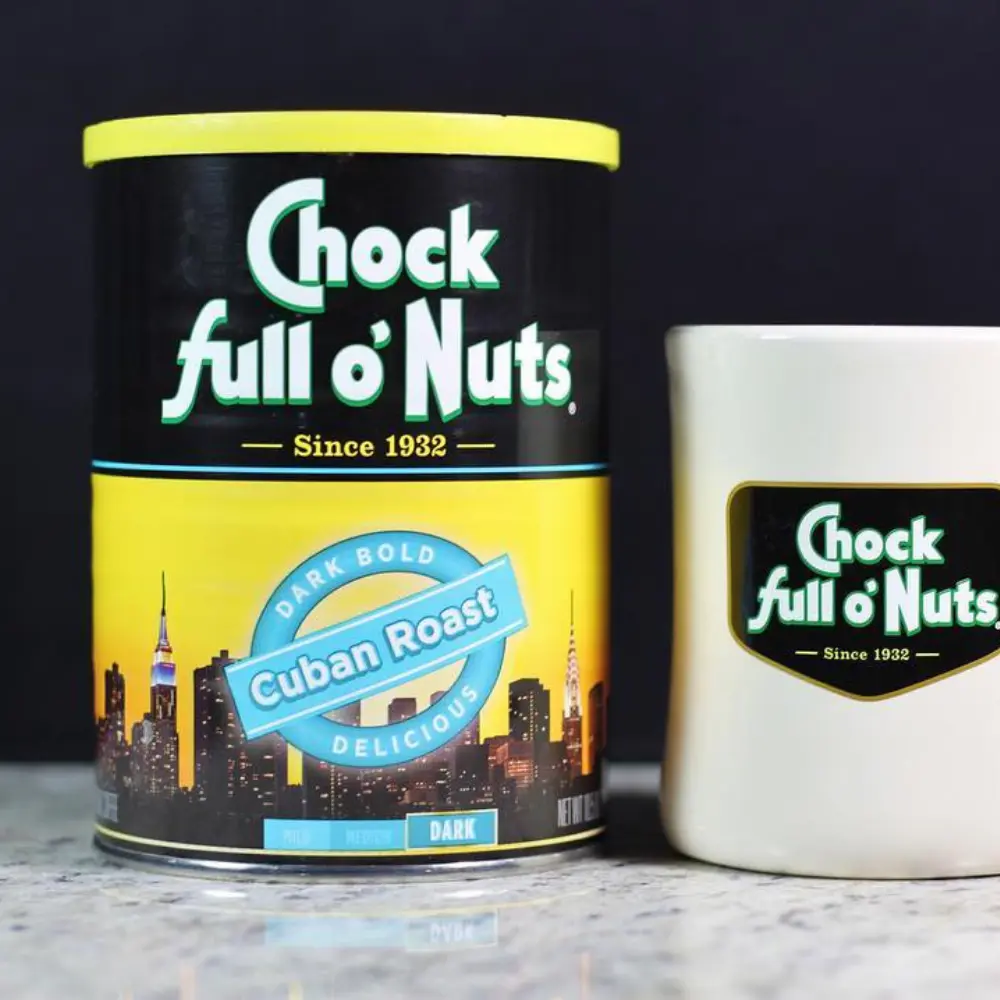
If you appreciate a coffee with a sweet and floral fragrance, Chock Full o’Nuts Cuban Ground Coffee could be an ideal choice for crafting your favorite coffee beverage. This particular coffee brand showcases delightful hints of sweet cocoa and floral tones, while maintaining a harmonious blend with a strong, bitter, and subtly tangy aftertaste. Contrary to its name, the coffee does not contain any nuts or exhibit nutty flavors.
Conclusion
In conclusion, colada coffee holds a significant place in Cuba’s vibrant coffee culture, representing much more than just a caffeinated beverage. This uniquely Cuban espresso drink, known for its powerful kick and sugary sweetness, is a reflection of the communal spirit and love for strong, flavorful coffee prevalent in Cuban culture. A shared drink, a moment of laughter, and a sugary wake-up call, this coffee serves as a testament to the diversity and vibrancy of global coffee practices. As the coffee world continues to evolve and embrace new trends, the influence of traditional drinks like colada coffee remains undeniable. So, whether you’re a coffee enthusiast keen on exploring different coffee cultures or a seasoned coffee drinker looking for a new experience, a cup of this beverage can offer a delightful, and potent, taste of Cuban tradition.
FAQ
Why is colada coffee often shared?
This beverage is traditionally served in small, thimble-sized shot glasses and shared among friends or family, making it a communal experience and a moment for social connection.
How to make the perfect colada coffee at home?
To make this drink at home, you'll need to brew espresso, then whisk a tablespoon of the hot espresso with sugar until it's thick and nearly dissolved. Stir in the rest of the hot espresso, let the foam rise, and serve immediately.
What makes colada coffee unique in the world of coffee?
This coffee drink stands out for its rich and strong flavor, sugary sweetness, and the social tradition of sharing it in small quantities, making it more than just a caffeinated beverage.
Where did colada coffee originate?
Colada originated in Cuba, and it has become particularly popular among the Cuban and Cuban-American population in South Florida, particularly Miami.


























